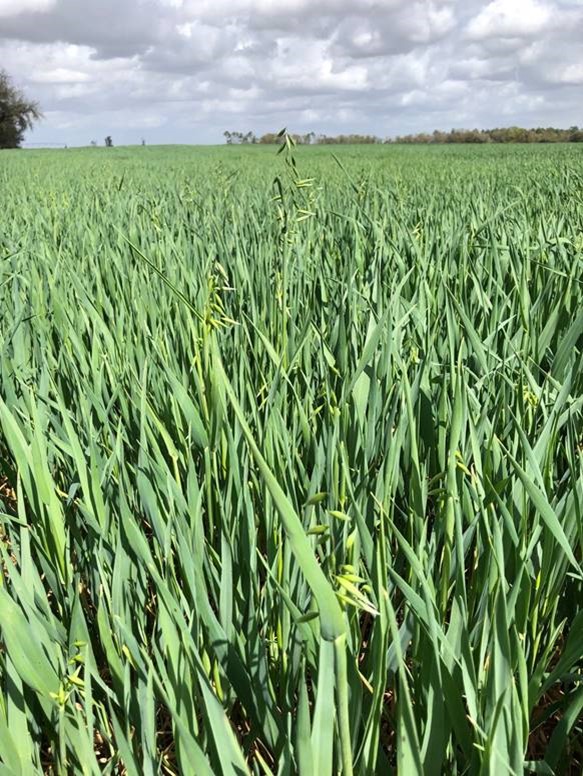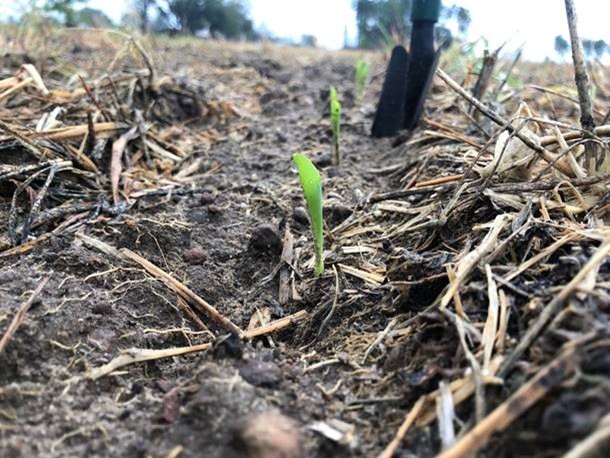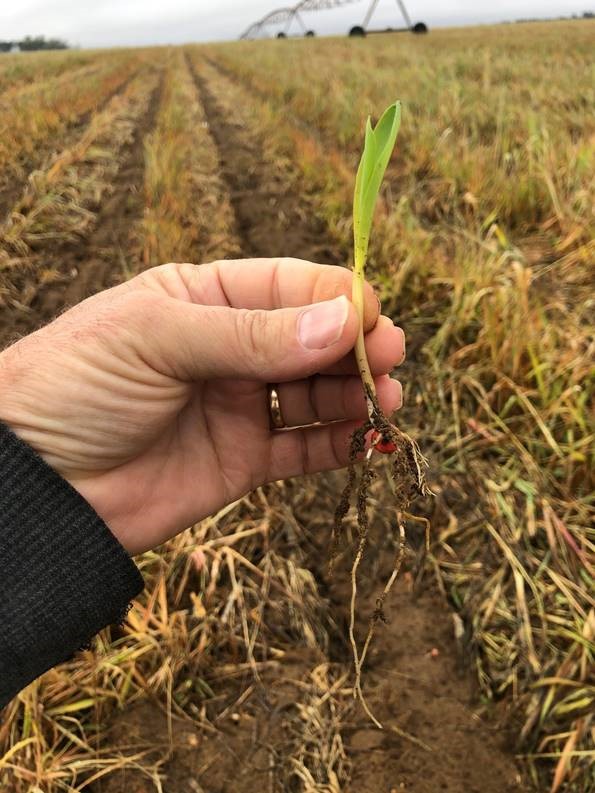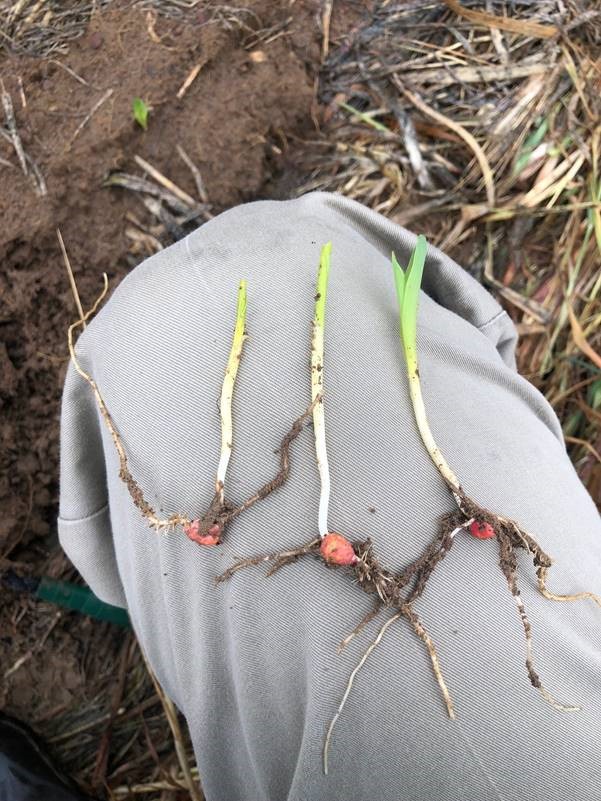Rome Ethredge, UGA Interim Grains and Soybean Agronomist
Cold Coming this Weekend
Looks like we will have a few cold mornings that may affect our small grains and any corn that’s up. Hopefully the duration of the cold will be short and with warm soils we won’t be hurt much. Additionally, we are not in the most susceptible timeframe in very much of our grain, between Heading and Flowering. Moist soil holds heat better, so if you can irrigate and your soil is dry, do that a day of so ahead of cold.
- For corn or small grains there is no point in trying to diagnose cold injury severity until at least 4 days after the cold weather. It will take this long for plants to return to normal growth and then be able to differentiate between slight damage that will recover and severe damage that will not recover.
- The severity of damage will depend on the growth stage, how low the temperature actually gets, and how long it stays at that temperature. A light frost that occurs at temperatures above 32 degrees does not worry us. These plants did not actually freeze and should resume normal growth once weather warms at the first of the week. Research has indicated that yield effects from freeze can be moderate to severe if temperatures drop to 24-28 degrees for two or more hours. However, temperatures of 31 degrees for several hours (4-6) could be just as damaging as 28 degrees for two hours, we will just have to wait and see.
- The most susceptible period is between heading and flowering. Wheat that is still in the boot stage will be provided some protection by the leaf sheaths that are wrapped around the head. Once these heads are exposed, though, they will become more susceptible to environmental conditions.
- Some symptoms to look for when called to look at fields are leaf discoloration:
- Leaf discoloration – twisted and light green or yellow with necrosis of the leaf tip. If the flag leaf is still emerging and appears yellow or necrotic this indicates that the growing point has been damaged or killed. If the growing point is killed that stem will not produce a grain head.
- Stem damage – twisted and yellowing or darkening areas of the lower stem. This damage may not directly cause yield loss but can lead to increased lodging that can increase yield loss. If this is the case then a timely harvest is the only option.
- Head damage – bent heads, bleached heads, and light green florets. Bent heads occur by rapid growth during warm weather followed by a sudden decrease in growth rate caused by quick changes in temperature. Bleached heads will be light yellow to white in appearance and are symptom of sterility and a lack of grain in the head, this may affect the entire head or only portions of the head. Light green florets were damaged by the freeze and will most likely become sterile and not produce any grain.
- Whatever happens with the cold weather there is nothing we can do to reverse or prevent any of this damage. The good news is that wheat and other small grains are winter plants in Georgia and can generally withstand slight freezing temperatures for a short period of time with a full recovery.
Here’s a photo I took this week of some oats grown for grain that the cold may affect, they are in the boot stage, just beginning to head out.
Here’s some corn from Thursday, March 10th that was planted March 1 in Seminole County, coming up good. Cold may burn back the top but the growing point is in the warm soil so it will bounce back quickly.
- Where Did That Weed Come From? The Importance of Weed Management Practices and Timings - December 5, 2025
- Sustainable U.S. Peanuts Kicks Off 2025 Crop Enrollment - December 5, 2025
- Grant Opportunity Available to Attend American Forage & Grassland Council Conference, Ashville – January 12-15 - December 5, 2025




